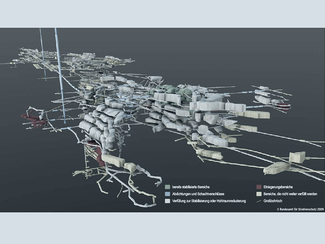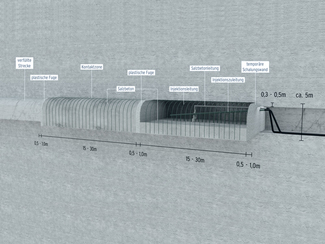Decommissioning concept
In the scope of the licensing procedure for decommissioning, a decommissioning concept has been developed in order to close the repository in such a way that there will be no risk for man and environment, not even on the long term. Different options have been examined and the option of widely backfilling the repository has been selected as the best suitable concept. For this decommissioning option the required long-term safety analysis was carried out.



